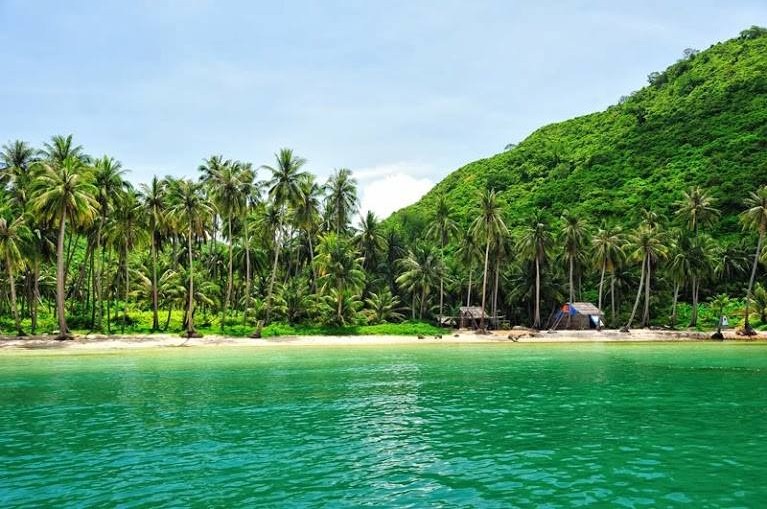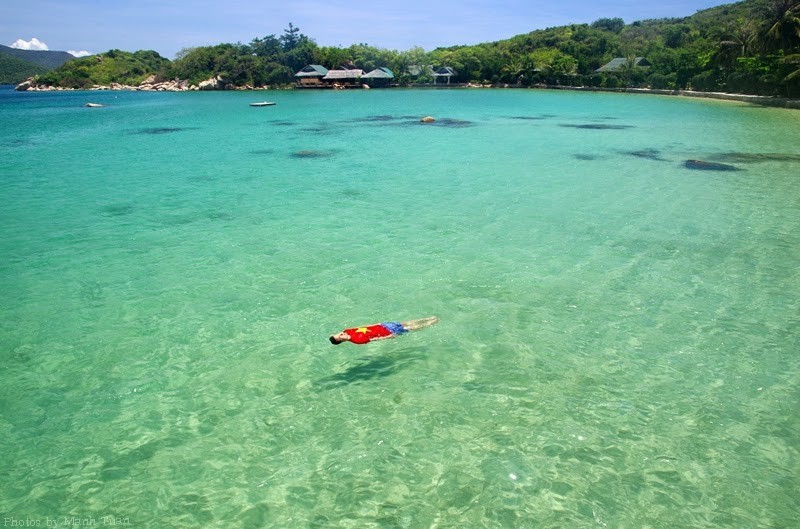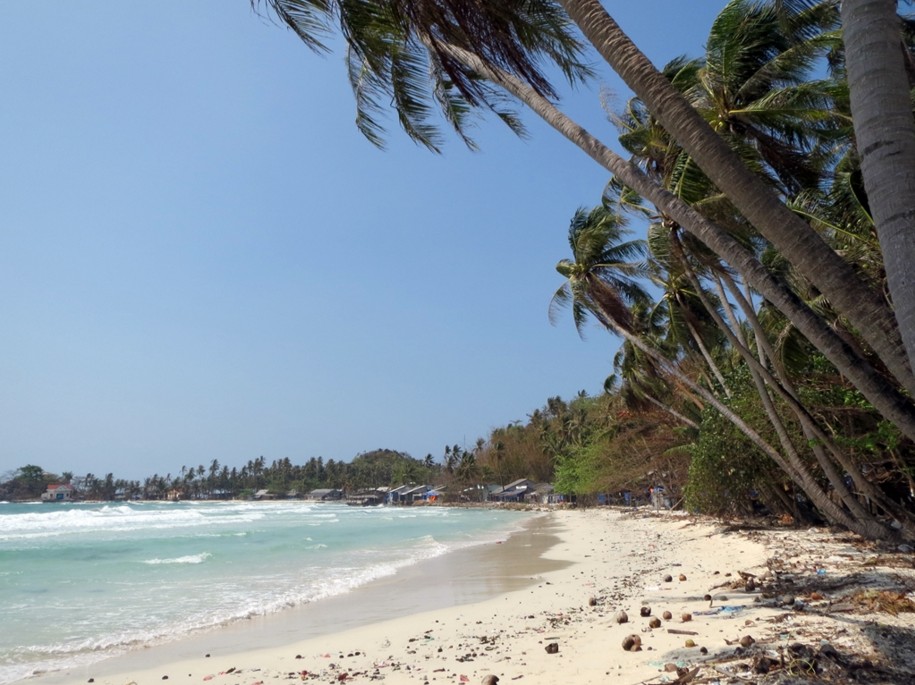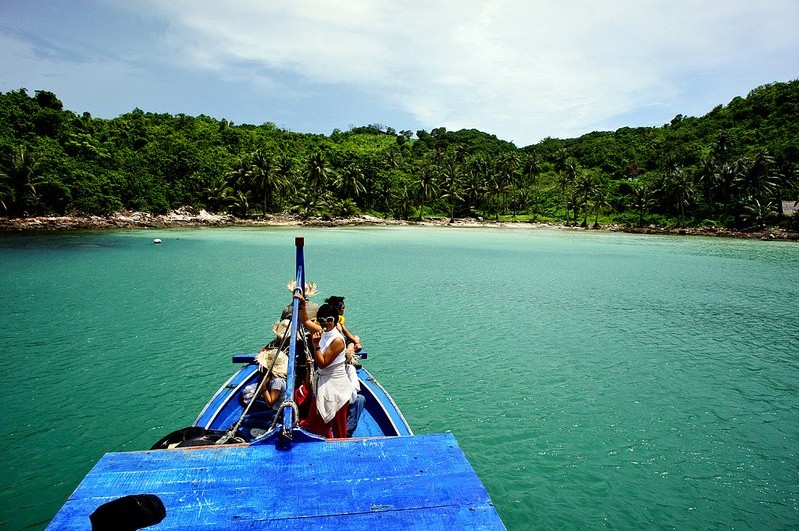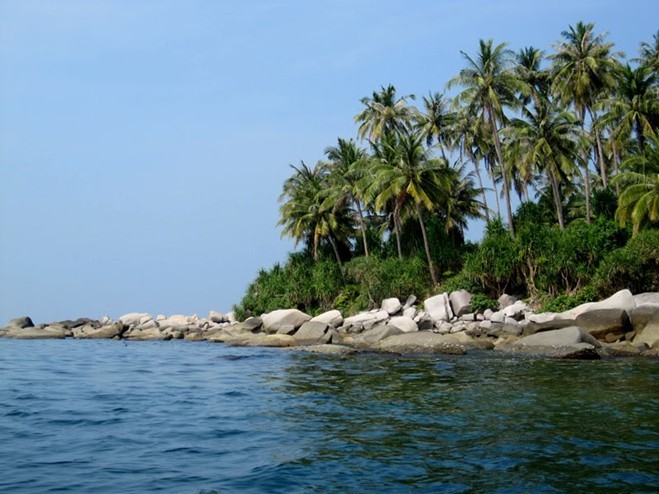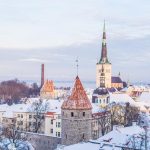Nam Du island — The ultimate travel guide
Located 250 km away from Saigon (now Ho Chi Minh City) by road, Nam Du Islands is being considered as a destination that Southern backpackers have to visit in the holiday seasons.
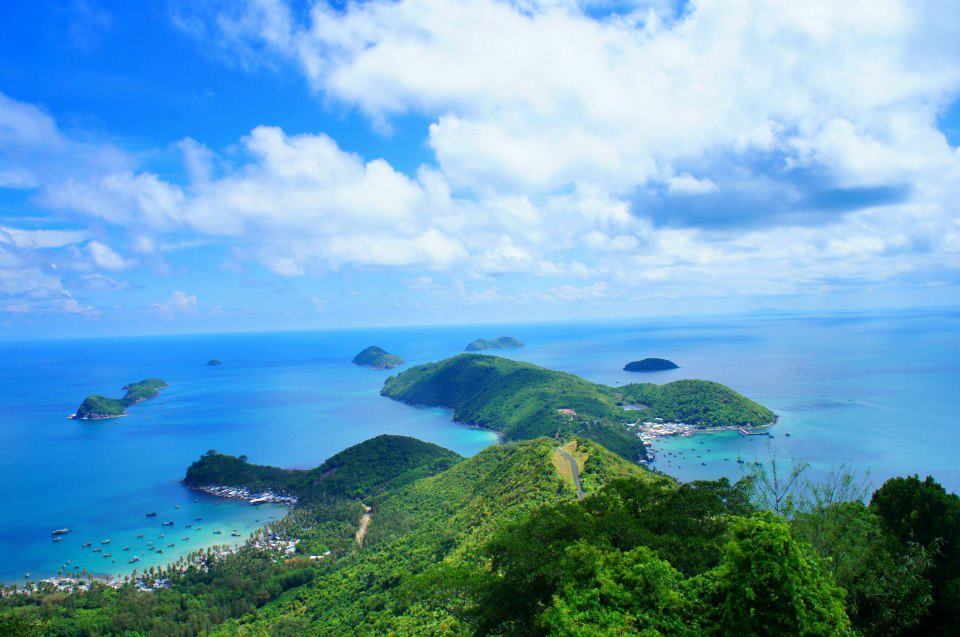
Best time to visit Nam Du Island
The ideal time to visit Nam Du Islands is from December to March of the following year, when the water is calm and crystal blue, making those who are seasick more comfortable while traveling by boat.
The sea in Kien Giang is not directly impacted by storms, but storm-caused rainfall accounts for a significant percentage of the rainfall; the rainy season here typically lasts from April to October each year.
How to get to Nam Du Island
To get to Nam Du archipelago, you need to go to Rach Gia city – Kien Giang. The most convenient means of transportation is the coach from Mien Tay bus station, with the approximate cost of 150,000 – 170,000 VND/ ticket. You should take the coach at 11 PM to get to Rach Gia at 6 AM the next morning.
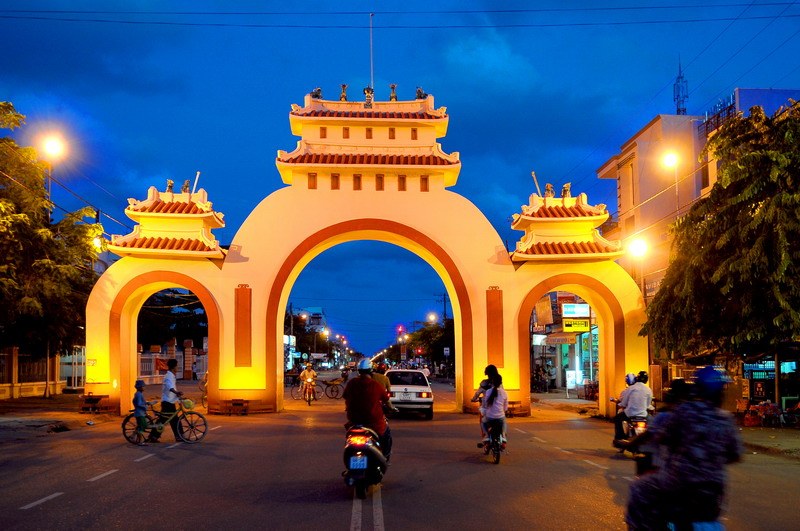
To continue the journey to Nam Du, you use express boat, the round-trip fare is about 440,000 VND per person. If there’s stormy sea level 6 or higher, the express boat service will stop.

Some boat agencies to get to Nam Du archipelago from Rach Gia.
Ngoc Thanh (express boat)
- Schedule: Rach Gia – Nam Du
- Departure time: at 8:15 AM in Rach Giá and at 12:15 PM in Nam Du
- Duration: 2 hours
- Contact phone number:
– Ha Tien – Phu Quoc: +84-77.3701575
– Rach Gia – Nam Du: +84-77.3691888
Ho Hai (normal boat)
- Schedule: Rach Gia – Nam Du
- Departure time: at 9:00 AM in Rach Gia and at 10:00 AM in Nam Du
- Duration: 5 hours
- Phone number: +84-77 3863019
If you take a boat at 8:15 AM, the boat will get to Hon Lon terminal in Nam Du archipelago at approximately 11:00 AM.
Superdong
- Schedule: Rach Gia – Nam Du
- Departure time: at 7:20 AM in Rach Gia and at 10:15 AM in Nam Du
- Duration: 2 hours
- Phone number: +84-919664660
Getting around Nam Du Island
By Boat
You should rent a boat to explore the islands surrounding Hon Lon island and see some lovely locations. Some individuals have boats for hire on the islands (if you can’t locate one, go directly to the dock, discover fishing boats of locals, and negotiate the price and where you want to go).
By Motorbike
You can rent motorbikes at boarding houses for about 150,000 – 200,000 VND/ day, and get to your favorite places as much as you like.
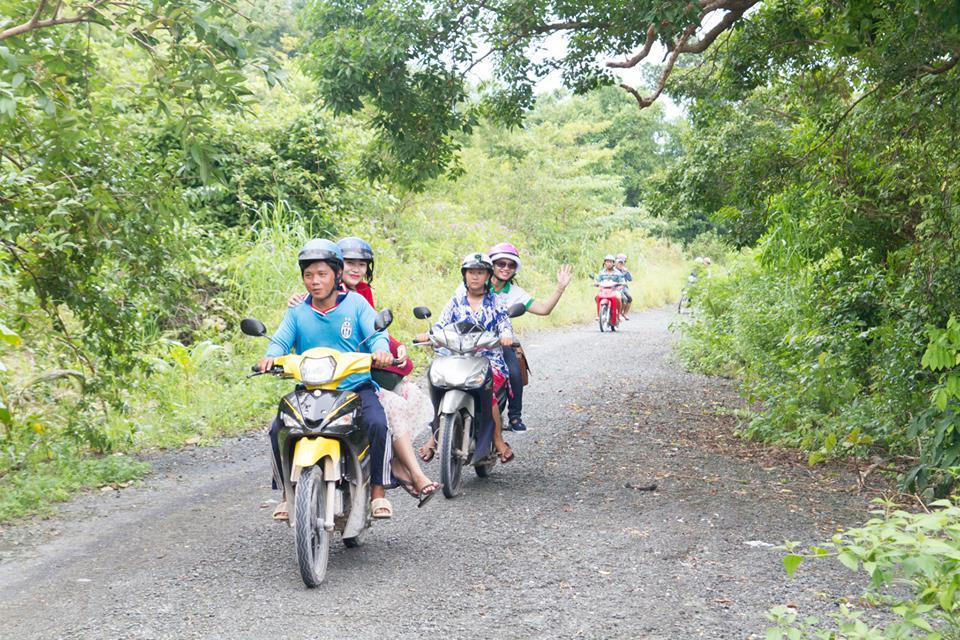
Where to stay in Nam Du?
There are 2 ways to stay at night in Nam Du: Boarding house or house of local people with the price of 150,000 – 200,000 VND/ night.
If you like to experience more, you can rent a ground and a tent to spend the night. The most suitable grounds for pitching tents are in Hon Dau because here there are coconut trees and a quite large sandy beach, convenient for camping as well as for many activities, the ground rental is about 30,000 VND/ person. Meanwhile, tent rental is 40,000 VND/ person.
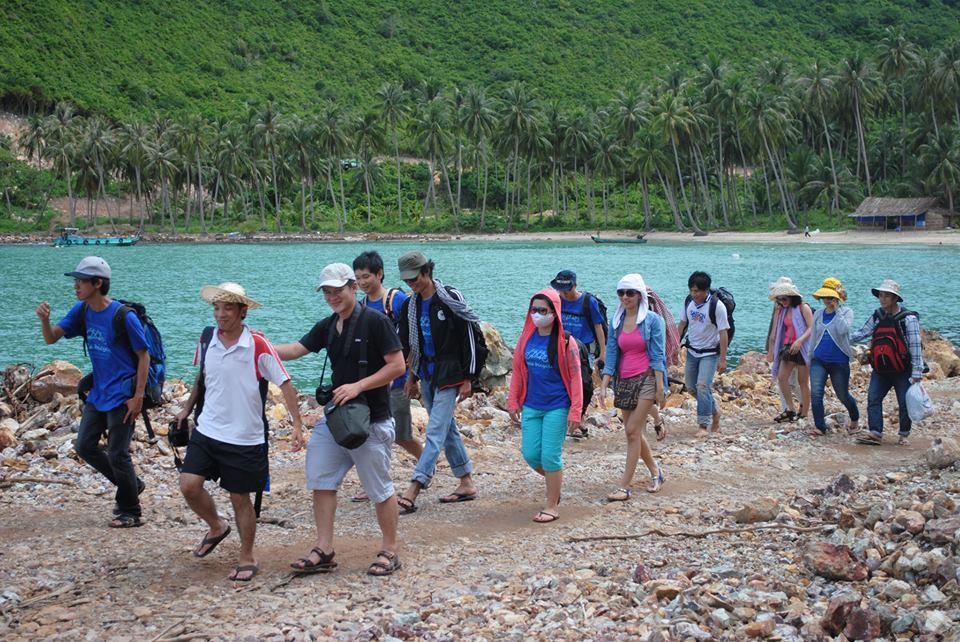
Places You Can’t Miss When Travelling to Nam Du
Hon Lon
A very beautiful bay with the area in The Gulf of Thailand. It is considered as the most beautiful beach in Nam Du archipelago. Leaning lustrous green coconut trees create shade, some of them even have tree life up to 70 – 80 years. Here, you can dive to catch squid or fish or to admire the coral reefs. Cay Men beach is pleasantly uncrowded, so you can freely play and swim as much as you want in the clear and cool sea water. Additionally, you can catch the snails in the rocks along the beach.

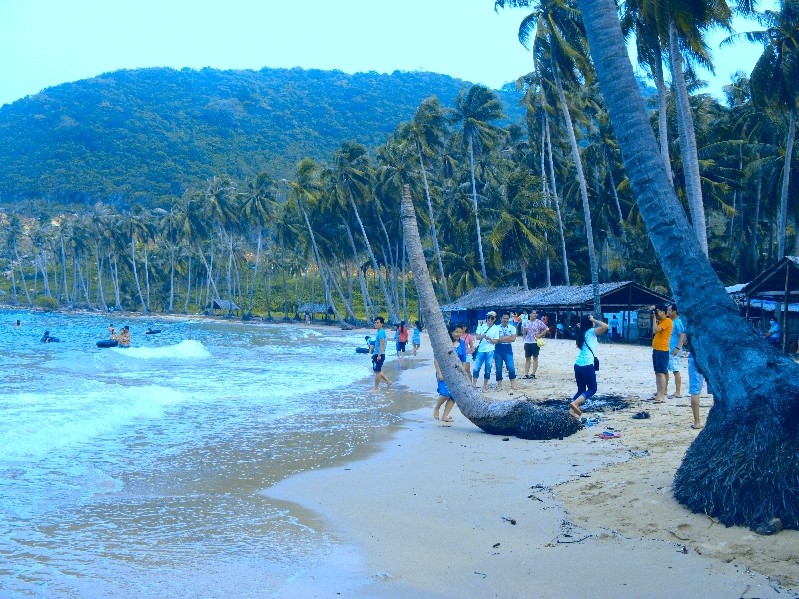
Ngu Beach
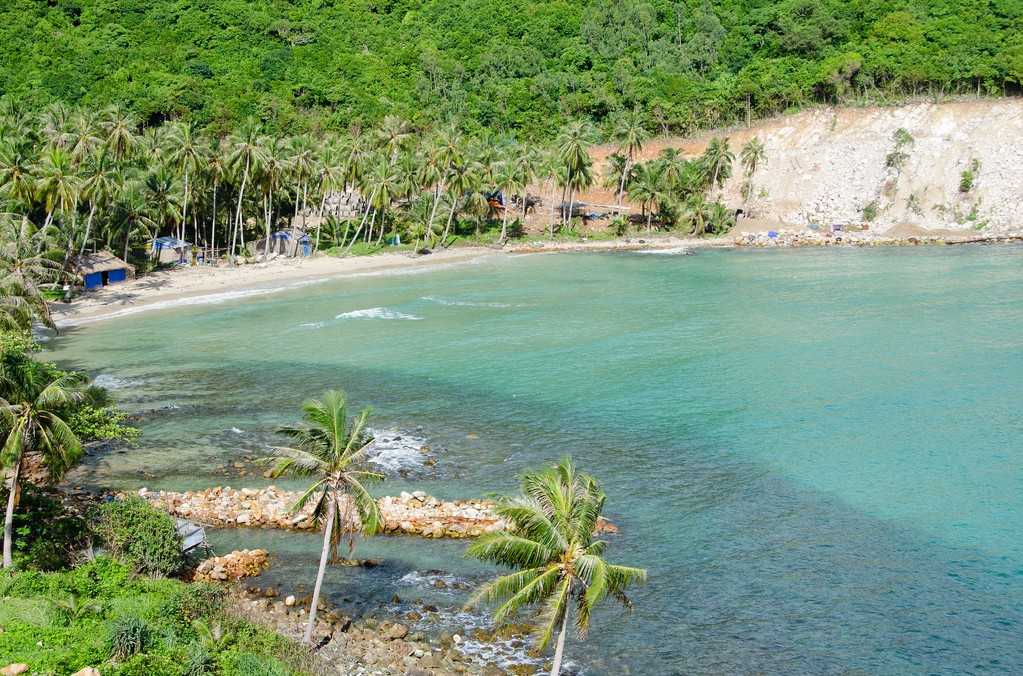
Ngu beach lies in the west of Cu Tron. Legend has it that on the way to Siam, King Gia Long stopped here so this area is called Ngu beach (the original name with full diacritics is “Ngự beach”, ‘Ngự’ means an act of stopping to rest or stay at a place). In the dry season, this place is still full of freshwater, while other areas are facing a serious freshwater shortage. Here, there is a well which is always filled with freshwater. Local people assume that the well was dug when the King arrived here so it is called King well.
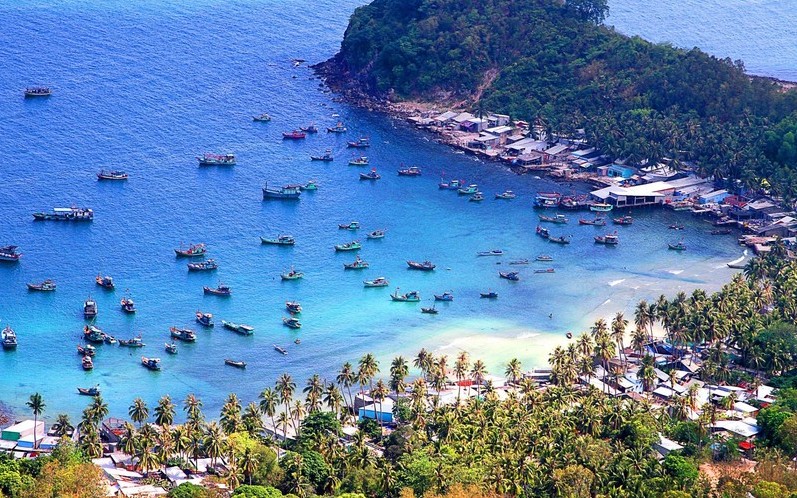
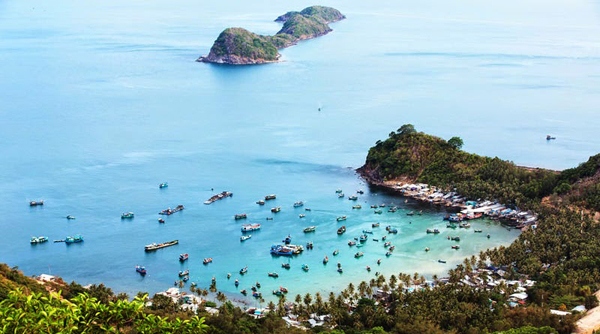
Chet Beach
According to folk, in the 16th century, on the way to Phu Quoc for trading, there was a great battle between people from the Netherlands and China. A few days later, there were hundreds of Chinese corpses pulled over on this beach, so people called it Chet beach (with full diacritics: “Chệt Beach”).
Nam Du Lighthouse
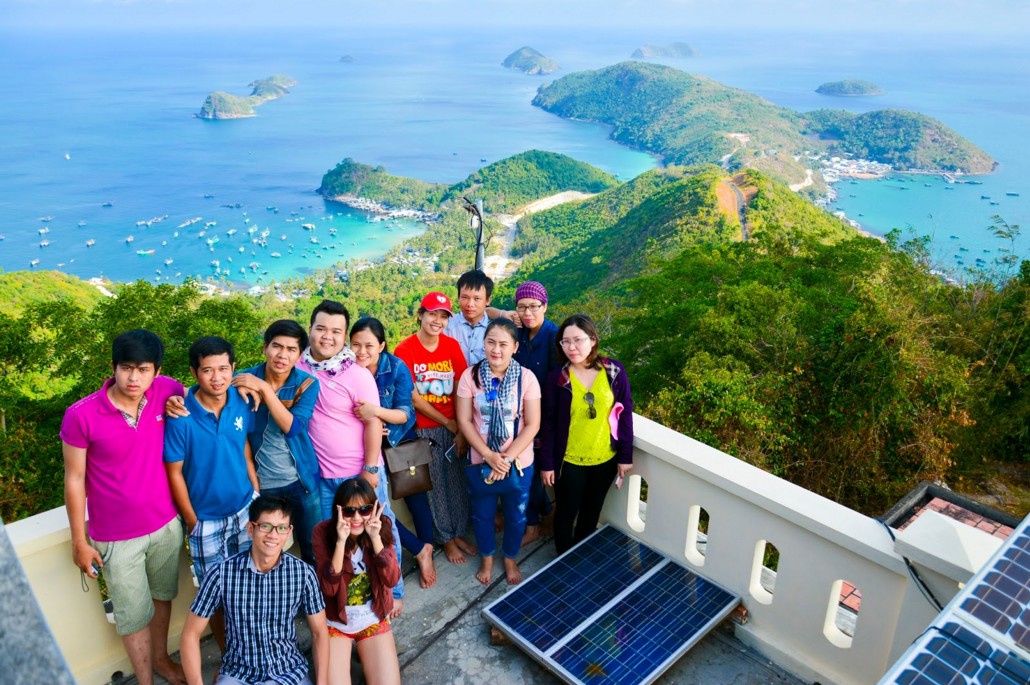
Nam Du lighthouse sits on top of Hon Lon (Cu Tron) in An Son commune. It is considered to be the highest lighthouse in Vietnam due to its location on top of the hill which is 300 meters higher than sea level.
Hon Dau
The beach here, like Hon Lon, is lovely, with numerous green coconut trees rustling in the breeze. When compared to other islands, Hon Dau is relatively large, with primeval woods covering roughly 90% of the total area. Many coral reefs are forming along the coast; they are not as excellent as those in deeper water, but the sea water here is crystal clear and exceedingly pure. Some coconut trees slant towards the sea, and you may lie down on their trunks and take a sleep in the fresh winds.
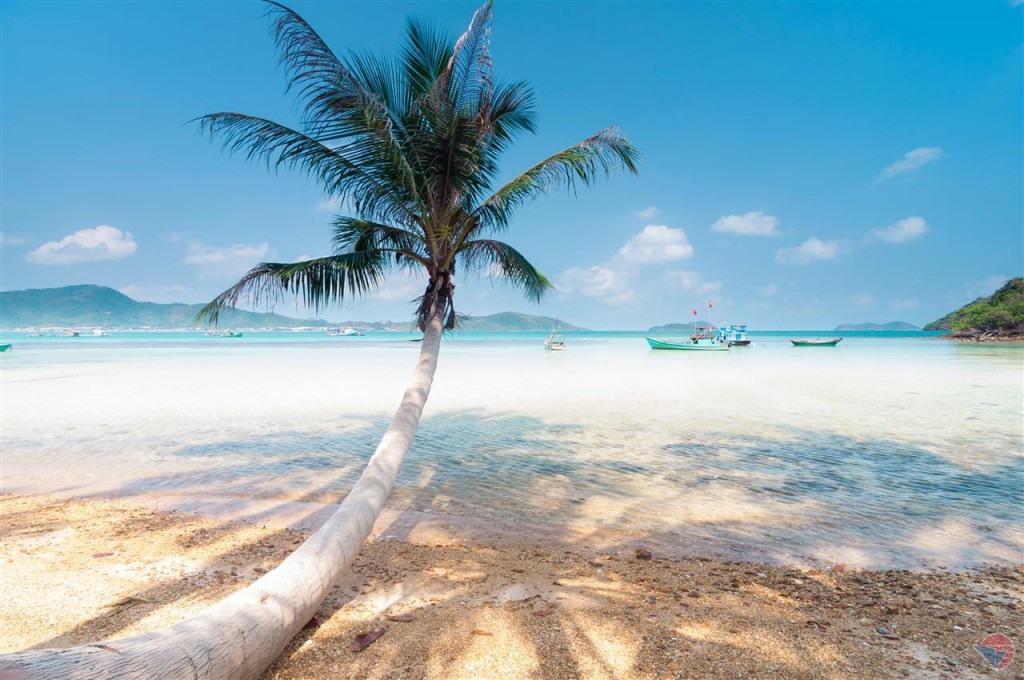
Hon Nom
Hon Nom is currently one of the few inhabited islands, with only Mr. Duong Van Sau’s family remaining. Mr. Vuong Van Kieu (father of Mr. Sau) reclaimed and constructed this island in 1960. The entire island is roughly 10 ha in size, but only about 3 ha of it is arable; the rest is entirely rocky.
Hon Mau
Hon Mau is roughly 200 hectares broad, with more than 120 neighboring homes crisscrossing the island’s bottom. The majority of the people here have a life and a work that are inextricably linked with the water. Because the island is tiny, locals, from the elderly to children, quickly recognize visitors from different countries.
Mother Nature appears to be prejudiced when it comes to providing this little island with beautiful beaches among the archipelago’s 21 islands. On the island, there are five beaches. There are two uncommon white sandy beaches among them: Chuong Beach and Nam Beach, with the remainder being three rocky beaches: Bac Beach, Da Den Beach, and Da Trang Beach. Nam beach serves as the island’s front door. Because this beach is nearly always calm all year, all boats and ships for commerce halt here. As a result, population has risen. This beach, on the other hand, is exceptionally clean, with white smooth sand.
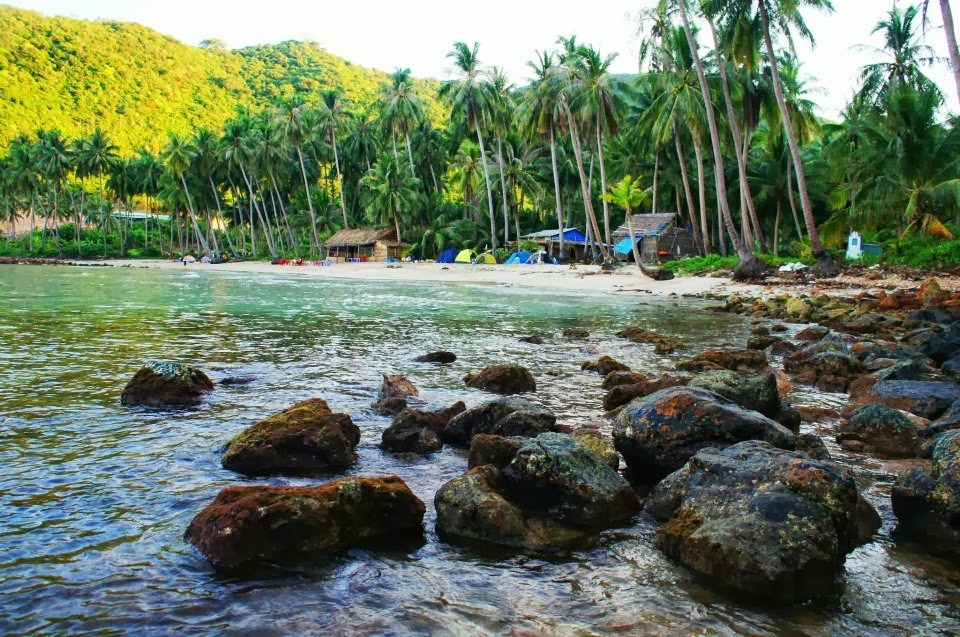
Chuong Beach
The most interesting thing is to immerse in cool water on Chuong beach. This beach seems like a bay and looks like a giant lake surrounded with coconut trees with tree life longer than human age. The sandy beach stretches, sea water is blue and so clear that you still can see the bottom when having been meters away from the seashore.
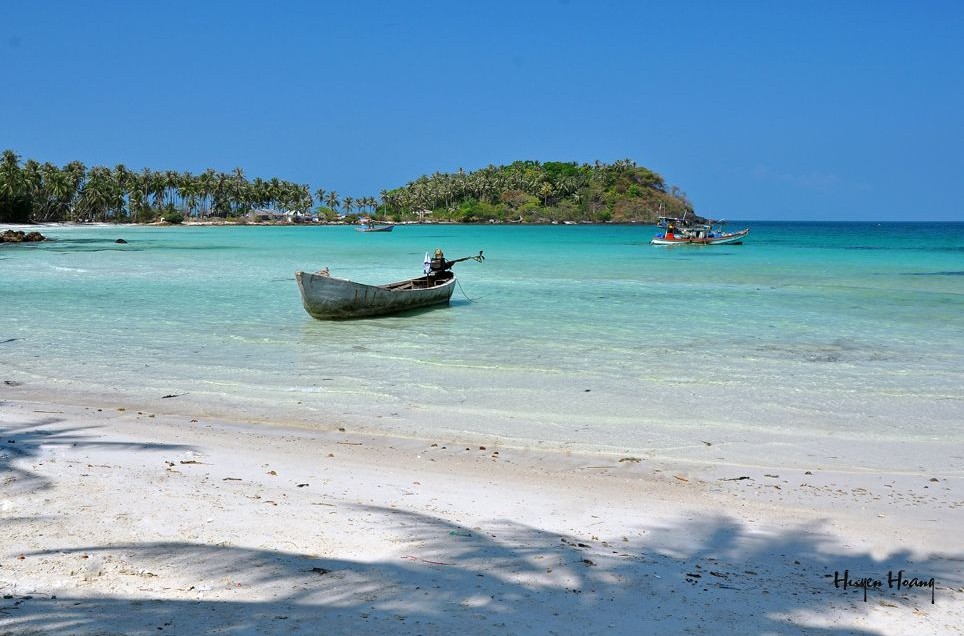
Besides are two perfect stone beaches. Da Den beach has many beautiful type of stones. The most are glossy black stone so local people take it as the name for the beach (Da Den Beach with full diacritics is “Đá Đen Beach”, ‘Đá Đen’ when being translated to English is Black Stone). The stones on this beach have a lot of shapes, colors. When sunshine pours down, the stones in the sea become sparkling with many eye-catching colors. There are some with very strange pattern. They are zigzagging blue, red like marbles. From Da Den beach, walk for about 15 minutes to get to Da Trang beach. The whole beach has only one color white from the stones. The stones with the size from your finger to hand lies along the beach. This beach almost doesn’t have sand, just only white stones. Whoever comes to those two stone beaches always brings two stones back as a gift from the sea.
Hon Ngang
Hon Ngang has a pier with calmest waves in Nam Du so it attracts many ships, boats and fish cages. Getting to Hon Ngang from Hon Lon takes 30 minutes by ferry, there are two ferries with departure time at 7:00 AM and 3:00 PM daily.
Hon Ngang is Nam Du commune center. Hon Ngang pier has thousands of ships, boats and nearly 60 fish cages anchored not in any order. The shore is a row of adjacent stilt houses raised on concrete and bamboo piles stretching 2 km. There’s only a small road with a width of about 1.5 m, without any kind of public transportation.
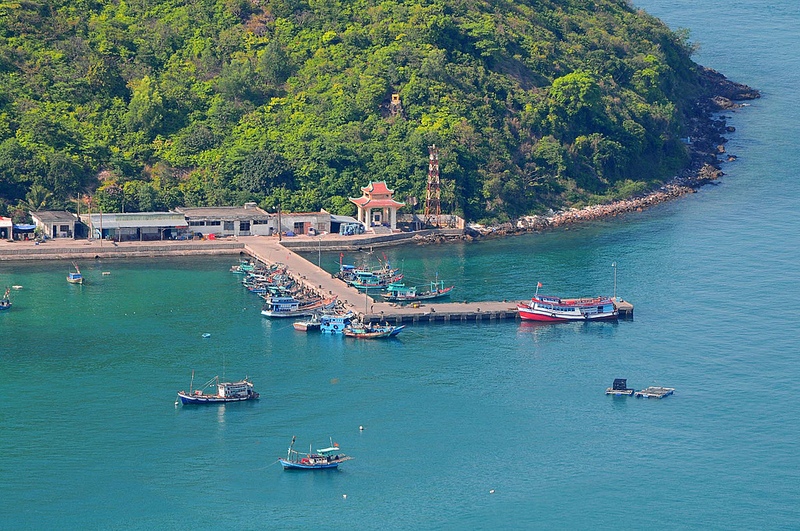
Hon Hai Bo Dap
It is a place tourists often choose to get together for camping and to pitch tents to stay the night. This is also a quite appropriate location for snorkel, catching urchin, fishing, swimming.
Hon Son (Hon Son Rai, Lai Son)
Hon Son (Hon Son Rai) emerges as a huge mountain between the Hon Tre and Nam Du archipelagos, 60 kilometers from the mainland, in the deep blue water. This lovely island, known as Lai Son since 1983, is one of four islands in Kien Hai commune (Kien Giang), with a size of 11.5 km2 and more than 2,000 inhabitants. Visitors to Hon Son can marvel at the dreamy landscape, the harmony between sea and island, as well as the humanistic qualities connected with the history and culture of a location surrounded by rolling waves.
Hon Son seems to be a glittering gem from afar on clear days, with 7 peaks among the waves. The closer you approach to the island, the more appealing it appears with the green hue of the palm palms and the beautiful, tranquil environment. There are fishing towns along the shore, packed boats, and a highly active environment.
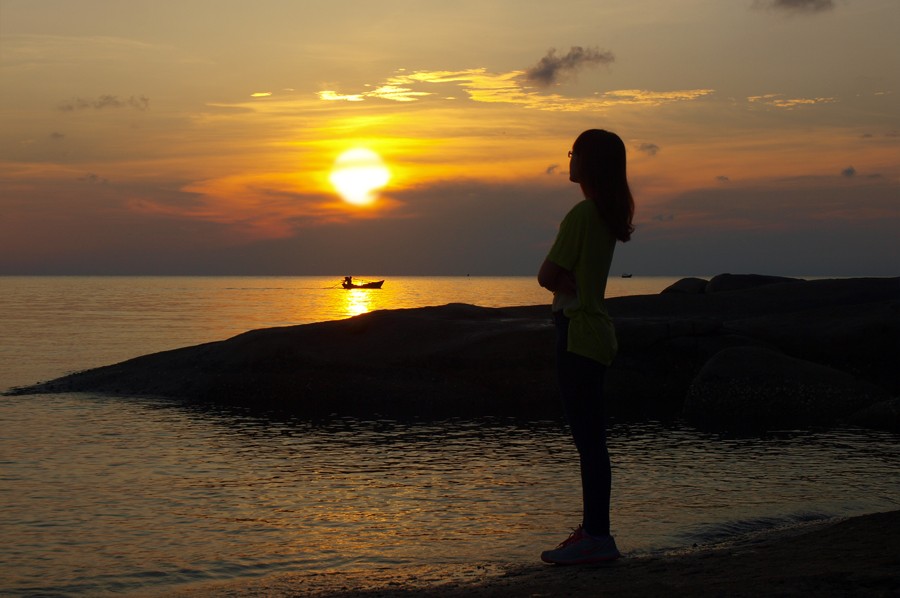
Everyone is captivated by the tiny, large stones heaped on top of one other with unique looks as they stand on the coast and take in the landscape. There are towering boulders with different forms sprouting above the pebble stones, especially at Thien Tue beach, near Nam Hai temple, creating a weird atmosphere.
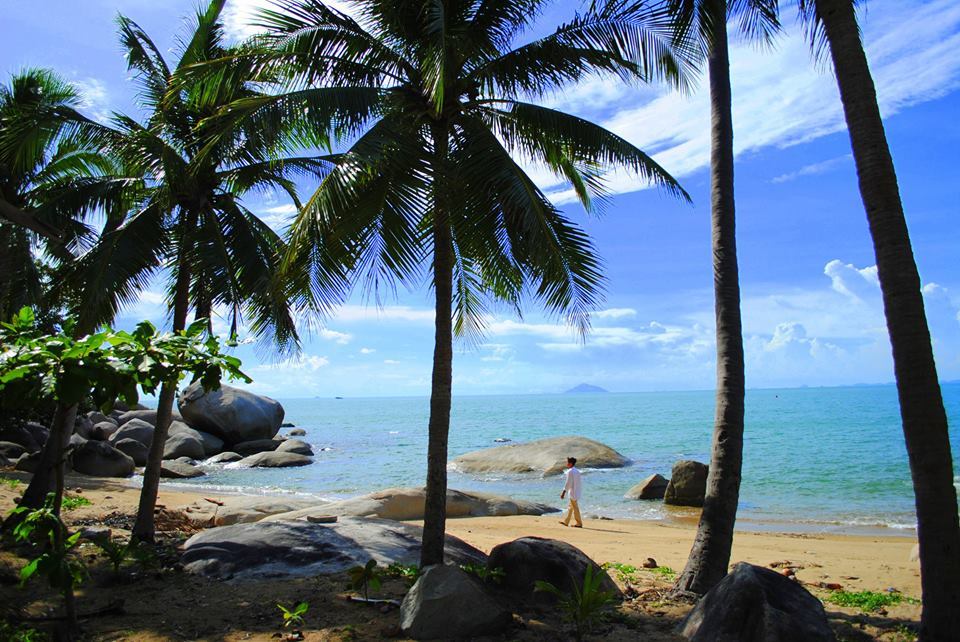
Ma Thien Lanh Hill
When visiting Hon Son, most people want to explore Ma Thien Lanh hill, which still has many myths that everyone here knows. They are legends of fairies descending on earth and landing on top of a hill, which is afterwards dubbed the yard of fairies. Later on, this location has a lot of woods and caverns, therefore a lot of hermits come here. On the route to Ma Thien Lanh, there is still an open-air Buddha statue and other marks left by ancient humans on rocks.
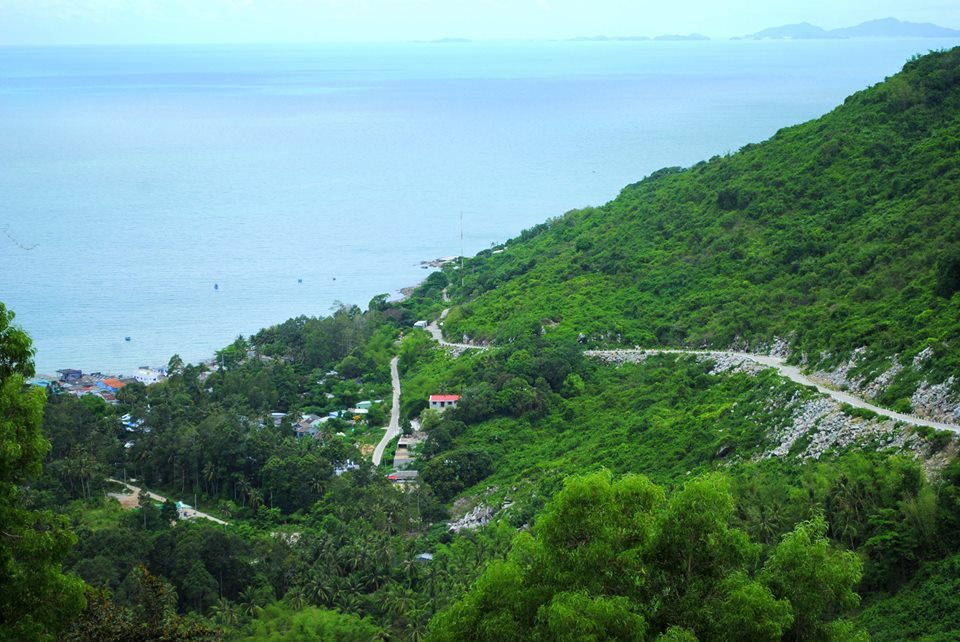

Delicious Foods in Nam Du Islands
Grilled needlefish with banana stems
Needlefish, also called Blue Bonefish, is a sea fish with a long body, pointed beak-like half breaks. A big one can be a meter in length and about 2-3 kg in weight. It is also called Blue Bonefish because fish skin is blue and when looking at it, the bones seem to be blue too.
People select the freshest fish from the sea, clean and cleanse their bodily slimes, then firmly wound and knot them between the banana stems. Then pile the firewood to grill the fish; when the stems droop and dry, the fish is done. When you break the stems, the fish skin splits, exposing flesh with a wonderful fragrant scent and flavor that will easily satisfy any gourmet from the mainland. The fish meat it not only sweet but also a bit tough, wrapped and rolled with rice paper, served along with wild vegetables such as creek premna (la cach), lolot pepper (la lop), ming aralia (dinh lang), blumea (cai troi), brindle berry new leaves (dot bua)…; creating a special color that you can’t find anywhere else for the archipelago.
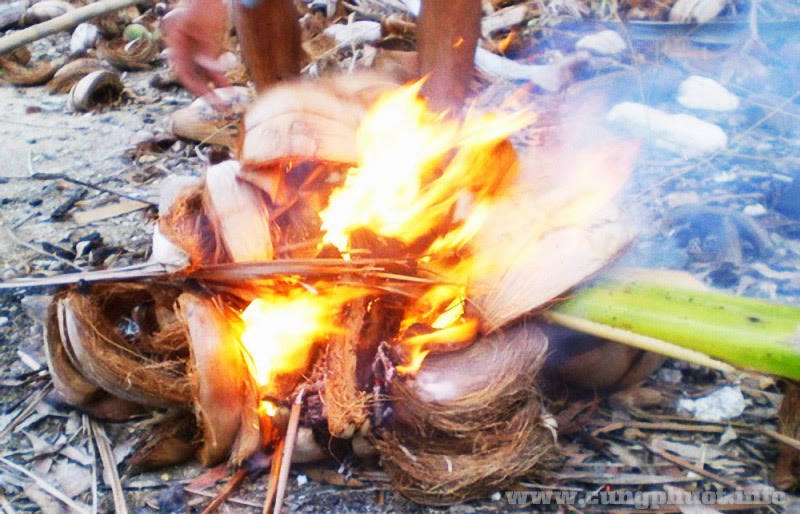
Grilled scallop with spring onions and peanuts
People select the freshest fish from the sea, clean and cleanse their bodily slimes, then firmly wound and knot them between the banana stems. Then pile the firewood to grill the fish; when the stems droop and dry, the fish is done. When you break the stems, the fish skin splits, exposing flesh with a wonderful fragrant scent and flavor that will easily satisfy any gourmet from the mainland.
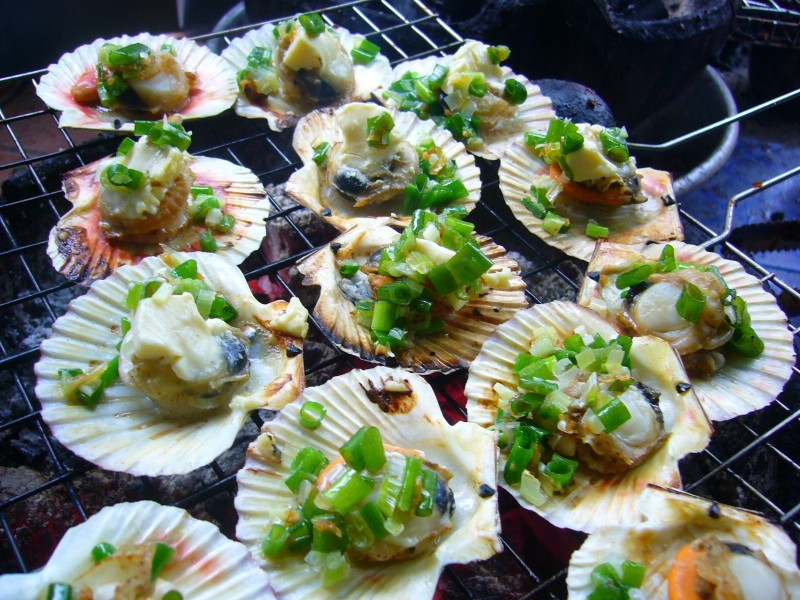
Steamed squid having eggs with ginger
Squids are collected during the breeding season, therefore they have a lot of eggs; the number of squids with eggs accounts for more than 70% of the total. Squid with eggs, according to experts, is a very healthy meal. Squid is highly popular since it is simple to prepare and can be used in a variety of tasty recipes. Squids with eggs can be prepared in a variety of ways, including fried squid with pepper, pineapple sauce, butter, grilled squid with chili sauce, or sauté recipe… However, the most renowned is still steamed squid with ginger because the sweetness of the squid is not lost, the squid is easy to process, and the taste does not grow dull.
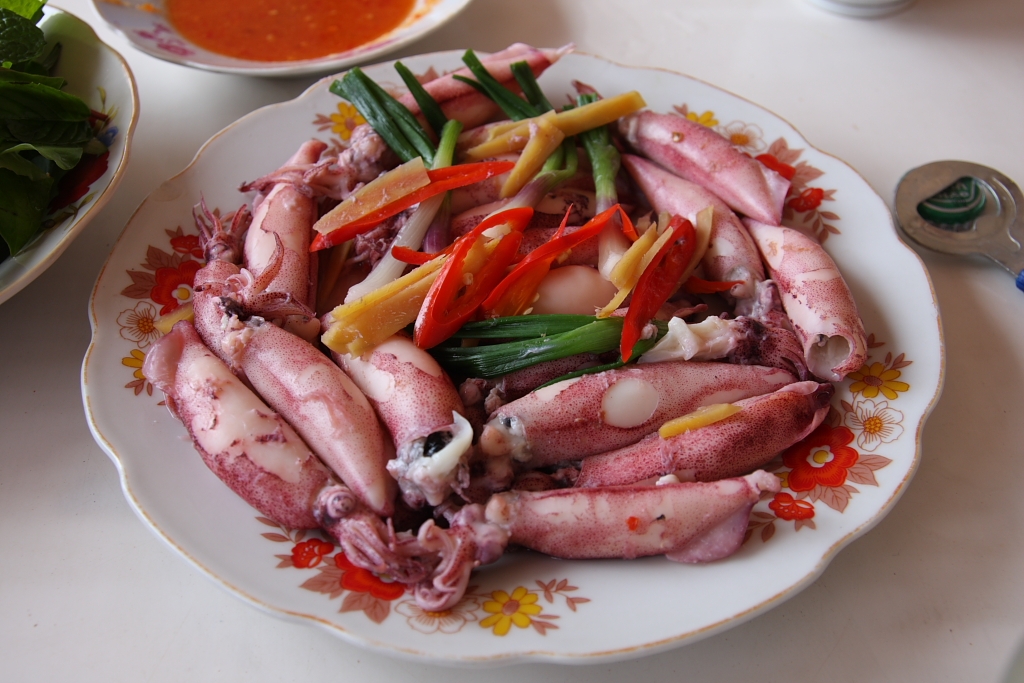
Sour soup with cobia
Kien Giang’s west coast is well-known for cobia fish aquaculture in tiny cages. This fish has an elongated fusiform black body that resembles a snakehead. The sour soup with cobia at this restaurant is not like the one on the mainland. It is prepared with fresh or salted tamarind, chopped lemongrass, and ground turmeric in this recipe. Locals add fresh or sour bamboo shoots to the meal to make it more appetizing.
Dried fish
Drying is the world’s oldest way of preserving food. Dried fish may be stored for a year without decomposing. Drying fish is a simple but efficient method that fishermen use to retain their catch if it is not sold. Dried fish is more convenient to transport than fresh fish. All varieties of dried fish are prepared from fresh tasty fish in Nam Du and are a popular tourist attraction.











